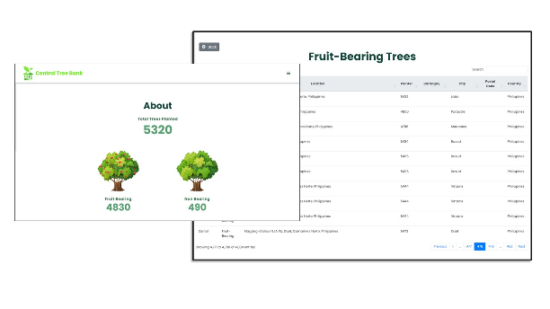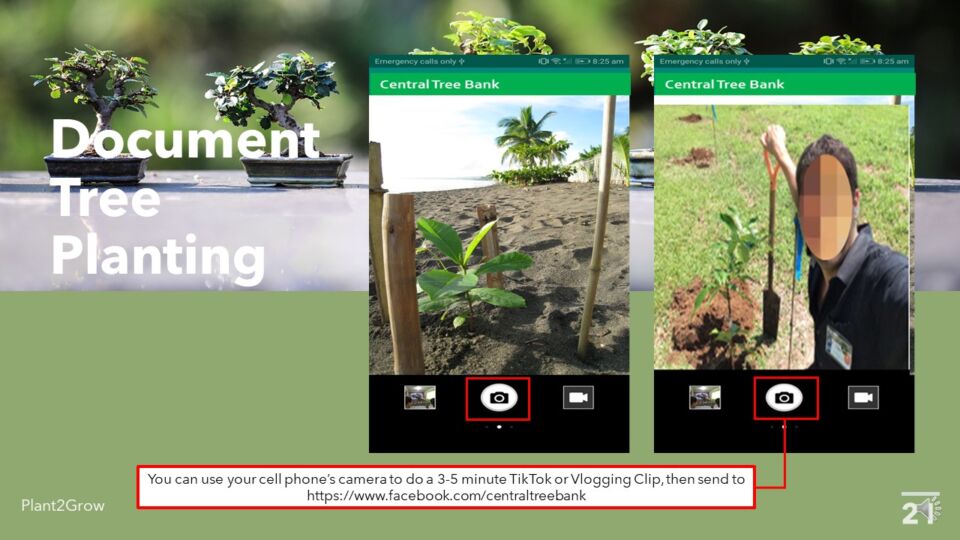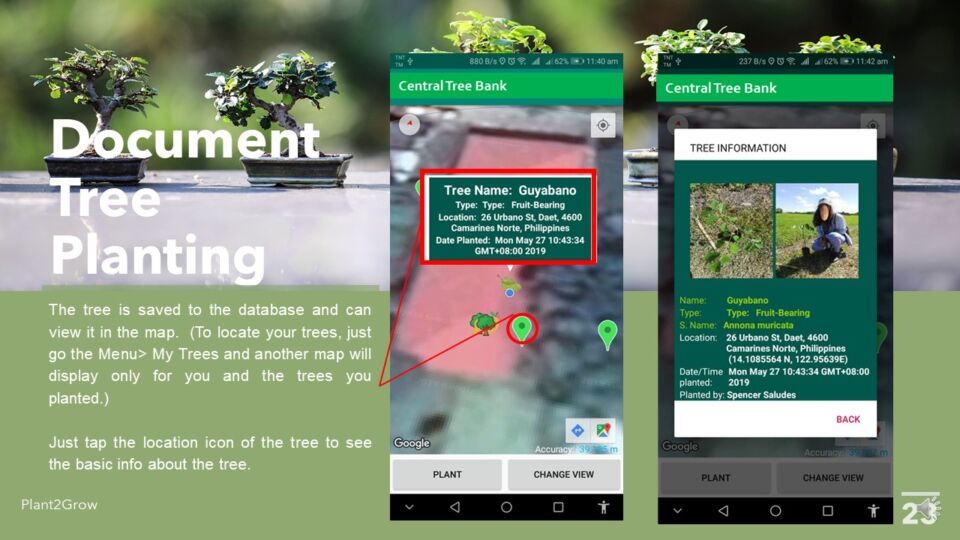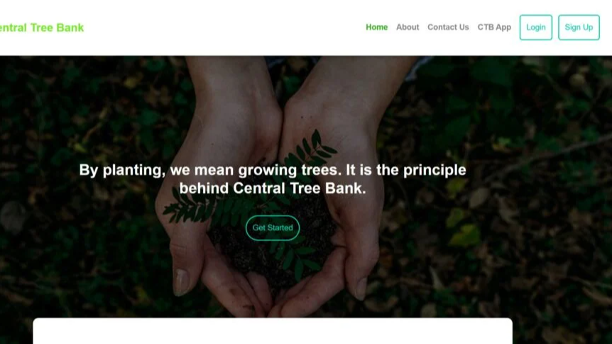Help us grow more Trees
Fundraising campaign by
Ronaldo Dando
-
₱0.00raised of ₱1,200,000.00 goal goal
No more donations are being accepted at this time. Please contact the campaign owner if you would like to discuss further funding opportunities
These are the basic but urgent reasons we need to plant and grow more trees.
- The Philippines was placed first globally among 193 nations in the World Risk Index 2022 (published in September) (representing 99 percent of global population). After Colombia and Mexico, India and Indonesia came in second and third, respectively.
- According to the Intergovernmental Panel on Climate Change's most recent assessment report (IPCC, 2013), continued greenhouse gas emissions will result in further warming, and it is almost certain that hot temperature extremes will occur more frequently over most land areas during the next fifty years.
- The average annual mean temperature in the Philippines increased by 0.62°C between 1958 and 2014, with an accelerating pace of change. The amount and severity of rainfall have increased due to climate change, and more rainy days have been seen recently.
- "Trees help combat climate change, and this evebt dramatizes the need to take immediate, drastic reductions in greenhouse gases like carbon dioxide, which trees absorb," said former DENR Secreatry Cimatu, who is also the chair of the Cabinet Cluster on Climate Change Adaptation, Mitigation, and Disaster Risk Reduction (CCAM-DRR).
- The Enhanced National Greening Program seeks to reforest the estimated 7.1 million hectares of unproductive, denuded, and degraded forestlands by enlisting the assistance of the private sector and investing in it in order to help private businesses become carbon neutral.
- According to UNCC, the link between the Paris Agreement and trees is clear—forests will be key allies for combating climate change and meeting the long term goal of restoring the ecological balance of planet Earth by the second half of the century.
- Absence of appropriate monitoring tool to record and gauge compliance by the people;
- Lack of sapling;
- Need for enabling true-to-all mechanism considering that most of the policies are only directed to students, and;
- Absence of measuring devise to count and register planted trees
- FAO-UN acknowledged that the Strategic placement of trees in cities can help to cool the air between 2 and 8 degrees Celsius, thus reducing the urban “heat island” effect, and helping urban communities to adapt to the effects of climate change. Large trees are excellent filters for urban pollutants and fine particulates. They absorb pollutant gases (such as carbon monoxide, nitrogen oxides, ozone and sulfer oxides) and filter fine particulates such as dust, dirt or smoke out of the air by trapping them on leaves and bark.
In the Philippines there are several laws requiring the planting of trees, one of the most recent was R.A. 10176 which requires all Filipinos 12 years old and above to plant at least One Tree a year. Likewise, every graduating students are now being required to plant at least 10 trees as pre-requisite for graduation. The issues about these laws about planting are the limitation of the government to enforce compliance because of the following;
Let’s look at the numbers. The ENGP's aim of 7.1 million hectares might equate to at least 7.8 billion trees (to be forested or reforested), whereas the urban areas of the Philippines make up roughly 1.081 million hectares. The target number of trees for urban areas would be approximately 12 billion trees if the urban greening aim were set at 10%.
We can address the mention limitations above and record accomplishment and milestones based on the targets numbers of trees for both the ENGP and the Urban (Carbon Capture) Greening Program.
Please help us grow more trees by helping us complete our Central Tree Bank and work for enabling policies to enforce compliance with tree planting laws.
I am an Environmental Planner and currently the Director of Integrated Sustainability and Resilience. In 2018, I develop an App called Central Tree Bank. It is a monitoring tool that was conceived to comply with the requirement of planting 100 trees in exchange for one tree that will be cut due to project construction. I thought of planting trees in advance and building inventory so that when needed, all we need to do is to "withdraw" from it when the Environment Bureau requires compliance. Then, it became a tool for student compliance with their tree-planting requirement as part of the community service program. It was helpful because of its GPS and documenting features. Recently, it was used in a province-wide simultaneous tree planting-to-growing activity which paved the way for a realization of its potential as a tool to help count the trees, project production of fruit-bearing trees, count native trees, and even estimate carbon capture -- and a lot more.
For now, the goal is to improve the App and smoothen it off glitches and bugs, adding some more important features. The purpose, on the other hand, is to make the App for use by schools in ensuring student compliance with legal and statutory requirements on tree planting and by shifting the paradigm into "growing". With the CTB App, students will now be required to plant trees as a requirement for admission and enrolment and they will be tasked to take good care of them until they graduate (where grown trees become the clearing requirement).
Additionally, in a study we conducted, we found out that only around 20% of trees being planted (via traditional practice) survived after 6 months due to several factors which can be attributed to non-monitoring and absence of follow-up. The CTB App intends to address this concern because of its visit notification and evidence-based tree status monitoring capabilities.
In the Philippines, which is now beset with strong typhoons and rising waters, and great floods, trees are imperative in the climate remediation equation. We need to grow many trees as soon as possible. And it can be done by making people comply with the law that says "every citizen 12 years and older shall be required to plant at least one tree a year can be equated to 79 Million trees per year". The CTB App as a compliance monitoring tool can help the government implement this law which was enacted 10 years ago.
Please, support us to make it fully functional and seamless on or before March 18, 2023.
Visit us on our Web Page: http://greeninginitiatives.com/central-tree-bank/#/
Watch some of our videos at: https://www.youtube.com/@centraltreebank4679
THANK YOU.
Organizer
- Ronaldo Dando
Previous Trees planted using CTB App
Update posted by Ronaldo Dando at 04:28 am
During the pandemic face to face, classes were not allowed. Many of the school activities need to be done online including tree planting. There were 5320 trees of which 4830 were fruit-bearing planted. These trees were documented and recorded but not monitored if "alive". In our school we have issued






